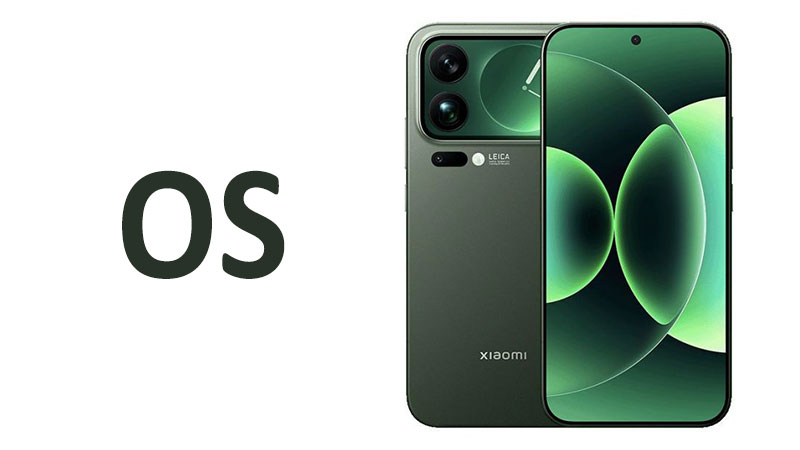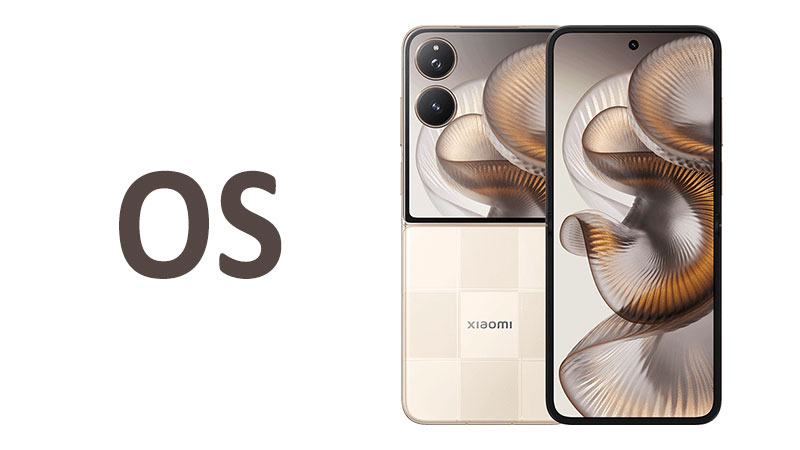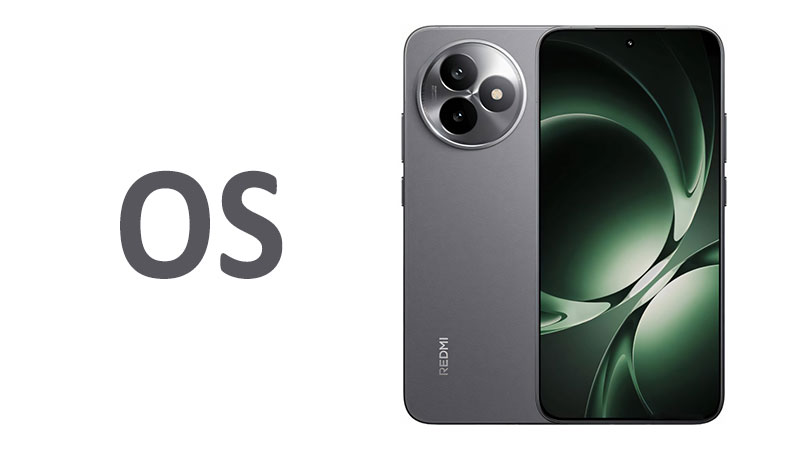The Xiaomi 17 Pro Max OS experience, powered by Android 16 and integrated with the custom HyperOS 3, marks a significant moment for the flagship smartphone market. This new software combination promises a revolutionary leap in performance, security, and ecosystem connectivity. Understanding the nuances of this operating system blend is vital for potential buyers and technology enthusiasts alike. The synergy between Google’s core innovations and Xiaomi’s deep customization creates a compelling platform. This review will thoroughly explore every major feature, offering detailed comparisons, outlining the benefits and drawbacks, and highlighting what makes this software unique.
The Foundation: A Deep Look at Android 16
Android 16, likely codenamed “Vanilla Ice Cream” or similar, serves as the stable, secure, and modern core of the Xiaomi 17 Pro Max. Google focused heavily on refining existing features rather than introducing entirely new, sweeping changes. This commitment ensures improved stability and reliability right out of the box. Users benefit from a more optimized system resource allocation. Furthermore, Android 16 sets a new baseline for on-device machine learning capabilities.
Security and Privacy Enhancements in Android 16
Security remains a primary concern for all smartphone users. Android 16 introduces an advanced permission monitoring system. This system flags applications requesting permissions that seem irrelevant to their stated purpose. For instance, a basic calculator app asking for microphone access will trigger a high-priority alert. This gives the user greater transparency and control over their data.
Another vital addition is the “Protected Compute Core” upgrade. This feature isolates sensitive user data, like biometric identifiers and encryption keys. The core operates within a secure, isolated environment, making it nearly impenetrable to external attacks. This is a significant improvement over previous Android iterations. This commitment to security provides users with increased peace of mind.
Android 16 also refines the Privacy Dashboard. Now, it offers real-time usage graphs and more granular controls. Users can quickly revoke multiple permissions from one centralized screen. This streamlined approach makes privacy management simple and efficient for everyone.
Performance and Battery Optimization
Efficiency is the hallmark of the Android 16 kernel improvements. Google completely overhauled the scheduling process for background tasks. Consequently, apps consume far less power when idle in the background. This directly translates to longer battery life for the Xiaomi 17 Pro Max.
The new system also employs advanced memory compression techniques. This feature ensures faster app switching and reduces overall memory pressure. Therefore, the Xiaomi 17 Pro Max maintains peak performance even under heavy multitasking loads. Comparatively, older Android versions often struggled with managing complex, interconnected background processes. Android 16 addresses these common performance bottlenecks head-on.
Core UI/UX and Gemini Integration
Android 16 continues the evolution of the Material You design language. The system features more fluid animations and deeper color integration across all menus and widgets. Wallpaper colors now subtly influence even third-party application interfaces. This creates a cohesive and visually pleasing experience for the user.
Crucially, Android 16 features deep integration of the Gemini family of AI models. This integration is not just a separate app; it is woven into the system itself. For example, Gemini can summarize notifications automatically or draft context-aware replies. This deep, system-level AI support is what truly differentiates Android 16 from its predecessor, Android 15. The AI works faster and more efficiently because it is optimized at the OS level.
Xiaomi’s Vision: HyperOS 3 (The Integration Layer)
Xiaomi has heavily invested in its custom operating system, HyperOS, moving beyond the older MIUI brand. HyperOS 3 represents the pinnacle of this development, acting as a seamless, feature-rich shell built atop the robust Android 16 foundation. The design philosophy centers on unifying a vast ecosystem of devices, from phones to smart home appliances.
HyperConnect: The Seamless Ecosystem
The core strength of HyperOS 3 is its HyperConnect framework. This feature facilitates instant and secure communication between all Xiaomi devices. The Xiaomi 17 Pro Max acts as the central hub for this interconnected network. For instance, a document started on a Xiaomi laptop can instantly be transferred and continued on the phone.
HyperConnect offers superior cross-device notification management. Users can dismiss an alert on their smartphone, and it disappears simultaneously from their smartwatch or tablet. This level of synchronization exceeds many competitors, including Samsung’s previous efforts in this area. It removes much of the friction associated with switching between personal devices throughout the day.
Refined Visual Design of HyperOS 3
HyperOS 3 introduces a visual design that is both modern and highly functional. Xiaomi refined its custom iconography, emphasizing clarity and consistency. The control center underwent a major redesign. It now features modular, customizable tiles for quicker access to essential settings. Users can rearrange and resize these tiles based on their daily habits.
The notification shade combines the best of Android 16’s utility with HyperOS’s aesthetics. Notifications are grouped intelligently, and rich media previews are displayed prominently. The design successfully balances visual appeal with practical, everyday usability. This makes the interface intuitive for both long-time Xiaomi fans and new users.
Memory Management and Performance Boost
Despite its heavy feature set, HyperOS 3 is remarkably light and fast. Xiaomi engineered its custom scheduler, called HyperEngine, to work in concert with Android 16’s kernel improvements. This collaborative optimization ensures system animations are buttery smooth and loading times are minimized.
HyperEngine also employs an innovative resource prediction algorithm. It anticipates which apps the user is likely to open next. The system then preemptively allocates resources, resulting in near-instant application launches. The result is a device that feels consistently quick and responsive, making it an excellent platform for demanding applications and games.
Deep Dive: Key Feature Comparisons and Analysis
The true value of the Xiaomi 17 Pro Max OS lies in the specific features developed within HyperOS 3. These customizations leverage the power of Android 16 to deliver unique user experiences. We will analyze the most important additions in detail, including specialized comparisons and objective pros and cons for each.
A. Cross-Device Connectivity and Collaboration
The HyperMind Pro feature takes cross-device capabilities to a new level. It is an intelligent feature that learns user routines across the entire ecosystem. HyperMind Pro predicts tasks and prepares necessary resources automatically. For example, if you consistently start your car navigation after leaving your office, your music automatically resumes, and the map begins loading.
The functionality goes beyond simple mirroring or casting. It allows for advanced collaboration. Users can drag and drop large files between a connected Xiaomi tablet and the 17 Pro Max instantly. This eliminates the need for cloud services or cumbersome cable connections for quick transfers. It is designed to create a single, unified workspace across multiple hardware pieces.
Comparison: While Samsung DeX requires a dedicated screen mode, HyperConnect is seamlessly integrated into the regular mobile experience. It feels less like a separate desktop environment and more like a fluid extension of the phone. Previous HyperOS versions offered similar features but lacked the deep, predictive intelligence found in HyperMind Pro.
Pros and Cons of HyperMind Pro:
Pros:
- Truly predictive task management saves the user time daily.
- Instant, high-speed file transfers between Xiaomi devices.
- Seamless and automatic handoff of tasks like calls or video playback.
- Creates a unified and highly convenient multi-device workflow.
Cons:
- It is strictly limited to the Xiaomi ecosystem, excluding other brands.
- The learning phase for the AI can sometimes lead to initial incorrect predictions.
- Activating all the features might require a significant data transfer agreement.
- Some users may find the predictive aspects too intrusive initially.
B. Security, Privacy, and Control Center
Xiaomi built upon Android 16’s strong privacy foundation with its proprietary “HyperLock” security feature. HyperLock allows users to create granular, app-specific virtual profiles. These profiles completely isolate work and personal applications, preventing data cross-contamination. This is crucial for professionals needing a secure boundary between their two digital lives.
The updated Control Center in HyperOS 3 includes a “Privacy Audit” widget. This widget continuously scans for apps accessing data in the background and reports its findings hourly. Users can immediately force-stop or adjust permissions directly from the widget. This proactive auditing is a massive step up from traditional permission dashboards which only provide usage logs.
Comparison: The security features in HyperOS 3 are arguably stronger than the default AOSP (Android Open Source Project) features. While stock Android provides excellent controls, HyperOS 3 adds an aggressive, proactive layer of monitoring and enforcement. This integrated approach ensures a higher level of user data protection.
Pros and Cons of HyperLock and Privacy Audit:
Pros:
- Proactive hourly scanning identifies hidden data access.
- HyperLock allows for complete data isolation using virtual profiles.
- The Control Center integrates security tools for easy access.
- Granular controls over network access for specific background apps.
Cons:
- The constant background monitoring can introduce a minor power drain.
- Initial setup of the virtual profiles can be time-consuming for some.
- Aggressive security might occasionally interfere with poorly coded older apps.
- The sheer number of control options may overwhelm a novice user.
C. Gaming and Performance Optimization
HyperOS 3 introduces the revolutionary “GameTurbo X” feature, an evolution of the previous GameTurbo mode. GameTurbo X dynamically adjusts system resources based on real-time game demands. It monitors CPU and GPU usage on a millisecond-by-millisecond basis. The system then redirects all available resources, ensuring maximum, sustained frame rates.
A key technical addition is the Dynamic Refresh Rate Shifter. This technology works in tandem with the Xiaomi 17 Pro Max’s advanced display panel. It shifts the refresh rate not just in steps, but smoothly, across the entire range (1Hz to 144Hz, for example). This eliminates screen tearing and provides a competitive edge in high-stakes mobile gaming.
Comparison: GameTurbo X goes beyond the simple “performance mode” found on most competitors. Specialized gaming UIs from brands like ASUS often prioritize maximum power draw. In contrast, GameTurbo X focuses on efficient, sustained performance, mitigating thermal throttling issues over long gaming sessions. This leads to a more consistent and stable gaming experience.
Pros and Cons of GameTurbo X:
Pros:
- Sustained high performance minimizes thermal throttling effectively.
- Dynamic Refresh Rate Shifter provides extremely smooth, tear-free visuals.
- Network prioritization ensures low ping and stable online connections.
- Customizable in-game overlays offer quick access to settings and stats.
Cons:
- Heavy resource allocation means the phone can still get noticeably warm.
- The interface for configuring complex settings is difficult for casual users.
- GameTurbo X needs to be manually configured for some newly released titles.
- The maximum performance is only realized in games optimized for HyperOS 3.
D. AI-Powered Workflow (Gemini + HyperMind Synergy)
The collaboration between Android 16’s core Gemini models and HyperOS 3’s HyperMind layer creates a powerful AI workflow. The Xiaomi 17 Pro Max can perform complex AI tasks locally on the device’s NPU (Neural Processing Unit). This ensures superior speed and better data privacy since the information never leaves the device.
A powerful new feature is “Instant Contextual Summary.” When viewing a long email thread or a detailed webpage, users can invoke the summary function with a simple gesture. The AI instantly provides a three-sentence summary, dramatically improving productivity. It also offers “On-Device Image Generation” based on simple text prompts, making creative tasks faster.
Comparison: This localized AI approach is superior to systems relying heavily on cloud-only processing. Services like older Google Assistant versions required constant internet connectivity and experienced latency. The Gemini-HyperMind synergy provides quicker, more reliable results, especially in areas with poor cellular service.
Pros and Cons of AI Workflow:
Pros:
- Extremely fast, on-device processing for instant results.
- Enhanced privacy because data analysis occurs locally on the phone.
- Instant Contextual Summary boosts productivity significantly.
- Generative AI capabilities are integrated directly into system apps.
Cons:
- Complex, resource-intensive AI tasks can drain the battery faster than expected.
- The quality of on-device generative AI is still slightly behind the largest cloud models.
- The NPU must be fully utilized, which restricts other simultaneous heavy tasks.
- Users must actively learn new gestures to access the AI features fully.
E. Battery Health and Charging Optimization
HyperOS 3 significantly enhances the way the Xiaomi 17 Pro Max manages its battery life. The new “Smart Cycle Guardian” feature utilizes AI to learn the user’s specific charging patterns over time. This includes when the phone is typically plugged in and unplugged. Based on this learning, it controls the final charge rate.
The system ensures the battery only reaches 100% just before the user needs it. For example, if a user typically wakes up at 7:00 AM, the phone charges quickly to 80% overnight. It then trickle-charges the final 20% in the hour before 7:00 AM. This practice minimizes the time the battery spends at a high voltage, which ultimately extends its lifespan. The feature provides significant long-term battery health benefits.
Comparison: This intelligent approach improves upon standard Android adaptive charging. Standard adaptive systems often rely on a simpler fixed-time schedule. The Smart Cycle Guardian is far more dynamic and personalized. It adjusts automatically to changes in the user’s work schedule or travel patterns. This personalized management optimizes long-term battery health effectively.
Pros and Cons of Smart Cycle Guardian:
Pros:
- Significantly extends the overall lifespan and health of the battery.
- Adaptive behavior adjusts automatically to the user’s weekly routine.
- The feature operates completely in the background without user intervention.
- Protects the battery from harmful high-temperature charging spikes.
Cons:
- Users who keep irregular hours may find the feature less useful.
- It requires several weeks of usage data to become fully optimized and accurate.
- The final charging stage can be noticeably slower for the last 20%.
- Some users may prefer the option to simply charge to 100% as quickly as possible.
Buyer’s Perspective: Important Points to Know
Potential buyers of the Xiaomi 17 Pro Max should consider the total software package carefully. The dual-layered approach of Android 16 and HyperOS 3 offers a uniquely powerful experience. However, new users should be prepared for a small adjustment period.
The initial stability of any new OS combination should be monitored closely. While Android 16 provides a stable base, HyperOS 3 is a comprehensive overhaul. Xiaomi’s track record suggests rapid patching and refinement after the initial release. Buyers should wait for the first major stability patch if absolute reliability is their top priority.
New users coming from stock Android or other custom UIs like OxygenOS will notice a steep learning curve. The abundance of HyperOS 3 features, especially in the Control Center and settings menus, requires exploration. Taking the time to customize HyperConnect and HyperMind Pro will unlock the phone’s full potential.
The immediate app compatibility is generally excellent, thanks to the Android 16 foundation. However, deep-level functions in HyperOS 3 may not be utilized by older, unoptimized apps. Users should expect major app developers to update quickly to support the new features. Overall, the software package delivers a top-tier user experience that focuses on power, privacy, and unparalleled connectivity within the Xiaomi ecosystem. This cohesive strategy ensures high performance.
Conclusion
The Xiaomi 17 Pro Max OS, running the powerful combination of Android 16 and HyperOS 3, is a landmark achievement in mobile software. Android 16 provides a secure, performance-tuned core with deep AI capabilities. Meanwhile, HyperOS 3 elevates the experience with its HyperConnect ecosystem and intelligent HyperMind Pro features. The emphasis on cross-device collaboration and personalized, on-device AI makes this a highly advanced operating system.
Security and battery health optimizations are strong selling points for this software package. The level of customization and control offered by HyperOS 3 is unmatched in the current market. Ultimately, users seeking a premium, interconnected, and highly optimized Android flagship will find the Xiaomi 17 Pro Max to be a compelling and forward-thinking choice. The software synergy successfully transforms the hardware into a true digital hub.
Frequently Asked Questions (FAQ)
1. Is HyperOS 3 a completely new operating system? No, HyperOS 3 is a highly customized user interface built on the stable, open-source foundation of Google’s Android 16. It replaces the older MIUI software layer.
2. Does the Xiaomi 17 Pro Max support all standard Android 16 features? Yes, it includes all core Android 16 features, like enhanced security and Material You theming. HyperOS 3 adds extra layers of functionality over the top.
3. What is the main benefit of the HyperConnect feature? HyperConnect allows for seamless, real-time file sharing and task handoff between the Xiaomi 17 Pro Max and other linked Xiaomi ecosystem devices. It creates a unified workspace.
4. How does the Smart Cycle Guardian extend the battery life? It uses AI to learn a user’s schedule and controls the final charge rate to 100%. This reduces the time the battery spends at high voltage, which is key to long-term battery health.
5. Can I disable the predictive AI features like HyperMind Pro? Yes, all advanced AI and predictive features within HyperOS 3 can be individually managed or fully disabled through the main system settings menu for user preference.



